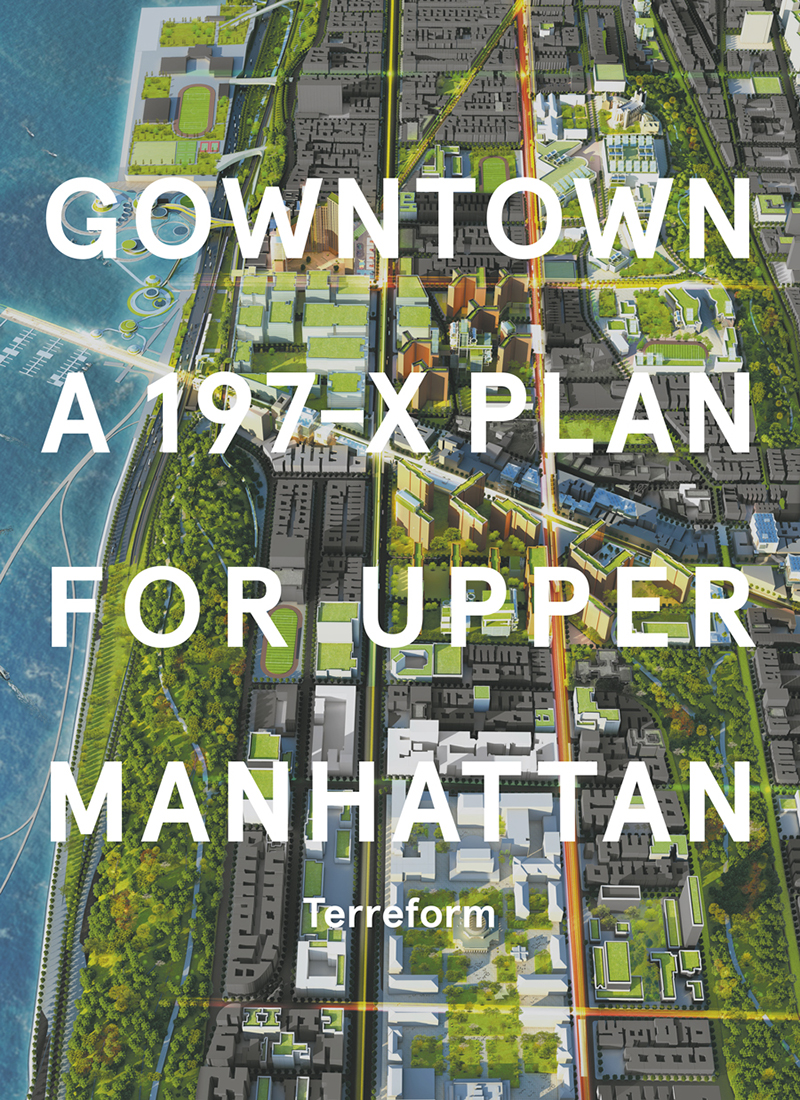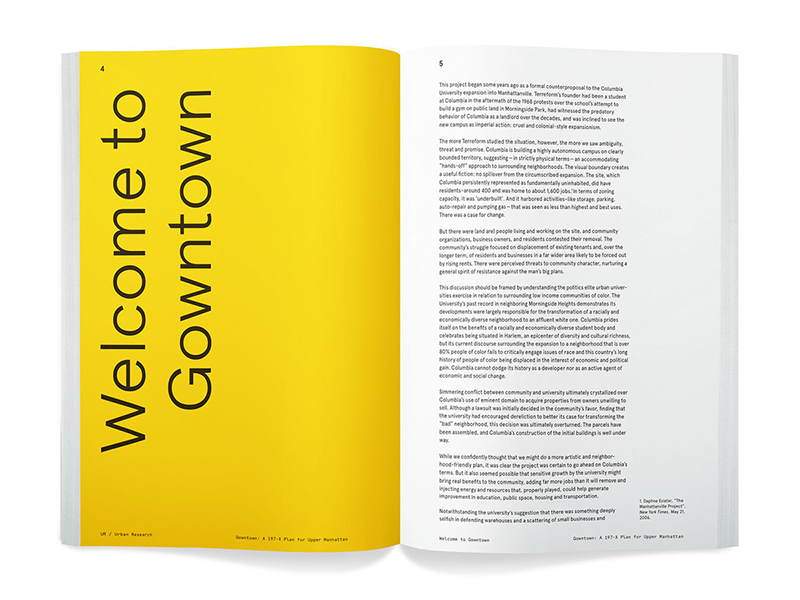Gowntown
Gowntown: A 197-X Plan for Upper Manhattan
Terreform
UR (Urban Research), 2016

Paperback | 8 x 11 inches | 180 pages | English | ISBN: 978-0996004107 | $40.00
Publisher Description:



Author Bio:
(Note: Books bought via these links send a few cents to this blog, keeping it afloat.)



Terreform
UR (Urban Research), 2016

Paperback | 8 x 11 inches | 180 pages | English | ISBN: 978-0996004107 | $40.00
Publisher Description:
Gowntown investigates the impact of Columbia University’s massive expansion into Upper Manhattan and proposes strategies of transformative leverage to generate broad community benefit and counter a spreading urbanism of trickle-down and gentrification. Terreform’s multi-scalar design is grounded in a planning paradigm focused on carefully crafted – as well as spontaneous – institutional, social, and environmental connections, inspired by the public possibilities of one of the world’s great concentrations of educational, medical, cultural, and community assets. Gowntown is addressed to all the people living, working, and studying uptown, presenting a collection of ideas that radically bridge the familiar – and too often hostile – divide between gown and town.dDAB Commentary:
Gowntown grows from a spirit of critical optimism and open possibility. How, we wondered, could Columbia’s enormous infusion of capital and energy be productively extended beyond the boundaries of its site? How might this actually enhance the prospects of those already living in the surrounding neighborhood of Manhattanville, in Upper Manhattan, and in the city as a whole? And how might the project activate a genuinely shared economic, environmental, social, educational, cultural, and morphological transformation that leaves no one out? Gowntown has some suggestions!
Having given a walking tour of Columbia University's four Uptown Manhattan campuses strung along the 1 Train — Morningside Heights, Inwood, Washington Heights, and Manhattanville — for many years now, I've been forced to dig into the long and contentious process of the last, the new campus taking shape northwest of 125th Street and Broadway. Laid out by SOM and Renzo Piano Building Workshop and with a trio of buildings by Piano already open, the campus is architecturally pleasing, with Piano's well-detailed modern stylings, transparent and accessible ground floors, and tree-lined streets cutting through the campus. The last two traits are enabled by a huge, seven-story-deep "bathtub" of services that the buildings effectively plug in to (this is explained well in Columbia in Manhattanville). This underground realm, though questionable given its proximity to the Hudson River, is one justification for Columbia's large, 17-acre footprint being unencumbered by other landowners. The most perplexing part of the process that started around 2002 and eventually resulted in the use of eminent domain was the City of New York approving both Columbia's development plan and a community-initiated plan that, among other things, did not displace existing tenants — and then stepping aside to let the university and community duke it out. It's no surprise who won.Spreads:
Instead of offering up a counterproposal to Columbia's 197-c plan and the local community board's (with The Pratt Center) 197-a plan, Gowntown explores the surroundings, making proposals for more a more equitable future over one of gentrification. Created by Terreform, the publisher of UR and the non-profit arm of Michael Sorkin Studio, the book mixes history, the machinations of zoning and planning in New York City, principles of urban design and planning, and colorful renderings that illustrate potential futures for 125th Street, Lavender Hill (aka City College of New York, where Sorkin teaches urban design), the public housing adjacent to Columbia's new campus, and other nearby areas. With its background on the Manhattanville campus and demographic study of Manhattan north of 125th Street, the first half of the book is a strong critique of planning in NYC and an argument for an approach that does not prioritize private development; it also exhibits many of the principles Sorkin espouses at CCNY, where I was a student about a dozen years ago.
The second half digs into the plan, which is varied but focuses on a couple main ideas: ThinkLink, a means of linking the various "Eds and Meds" in Upper Manhattan and spreading their benefits to people in these neighborhoods; and Parkapelago, a means of connecting and expanding the area's network of green spaces. More practical and physically conservative than one might expect coming from Sorkin and Terreform, Gowntown's 197-x plan wants to be taken seriously — as much as the 197-a and 197-c plans the city is bound to consider. While it probably won't influence the city, developers, and other actors in Upper Manhattan, it just might have a strong impact on a new generation of urban designers and planners more interested in sustainable, community development than private development.



Author Bio:
Terreform is a nonprofit urban research and design center that operates as a “friend of the court,” authoring alternatives that seek to raise expectations, enhance debate, and challenge conventional wisdom.Purchase Links:
(Note: Books bought via these links send a few cents to this blog, keeping it afloat.)


